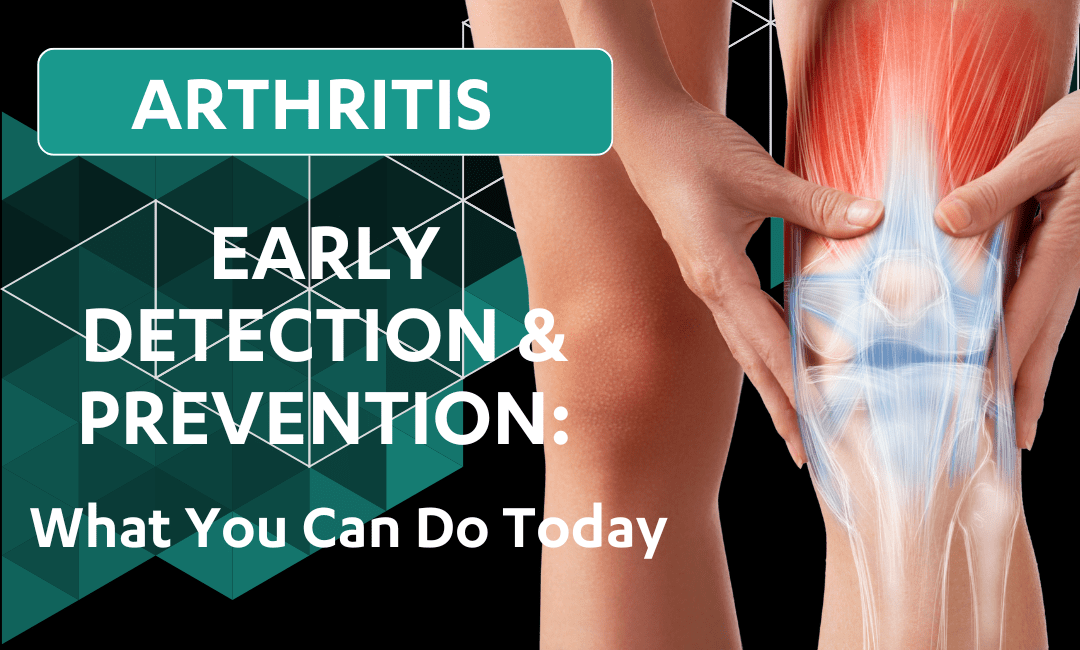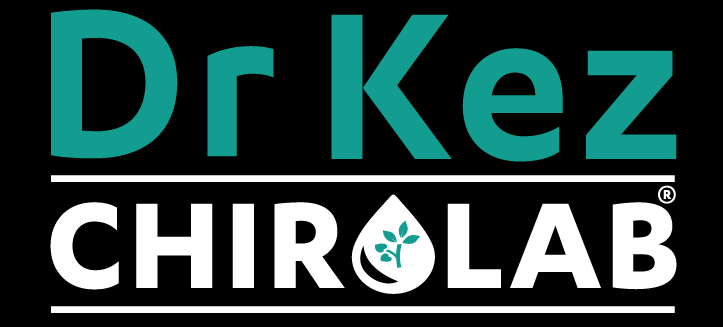
Arthritis Early Detection & Prevention: What You Can Do Today
Arthritis is often thought of as an inevitable part of ageing, but that’s far from the truth. The earlier you detect the signs, the more you can do to protect your joints, reduce pain and maintain mobility for years to come. Prevention and proactive care really are the keys to keeping your joints young.

Many people dismiss early symptoms as “just getting older,” but these are the red flags to pay attention to:
-
Morning stiffness lasting more than 30 minutes.

- Joint swelling or puffiness around the knees, hands or fingers.
- Tenderness or pain when pressing on or using a joint.
- Reduced range of motion - for example, struggling to fully bend or straighten a knee.
- Clicking or grinding sensations (crepitus) when moving.
Recognising these signs early can help you put strategies in place before the condition progresses.

There are more than 100 types of arthritis, but three are most common:

- Osteoarthritis (OA): Often called “wear and tear” arthritis, OA develops when cartilage cushioning the ends of bones breaks down. This leads to pain, stiffness and reduced mobility.
- Rheumatoid Arthritis (RA): An autoimmune condition where the immune system mistakenly attacks the joints, causing inflammation, swelling and damage.
- Gout: A form of arthritis caused by uric acid crystals building up in joints, leading to sudden, painful flare-ups.
Understanding the type of arthritis is key to choosing the best management and prevention strategies.

Joints are designed to move smoothly, cushioned by cartilage and lubricated by synovial fluid. Over time, two main factors speed up wear and tear:
Tight Muscles: When muscles around a joint are tight, they create constant tension, pulling unevenly and placing more stress on the joint surfaces.
Poor Lubrication: When we don’t drink enough water or move regularly, joints can become “dry.” Synovial fluid depends on hydration and movement to circulate, and without it, joints stiffen and cartilage breaks down faster.

The good news is that arthritis isn’t a life sentence, you can take action today.

Stay Hydrated: Water keeps your joints lubricated, reducing friction and stiffness. Think of synovial fluid as the oil in your joints, it doesn’t flow well without hydration.
Keep Moving: Gentle, consistent movement like walking, stretching and yoga ensures synovial fluid circulates and nourishes your cartilage. Both low-impact exercise (like swimming or cycling) and weight-bearing activity (like walking or light resistance training) are important to keep bones and joints strong.
Stretch Regularly: Loosening tight muscles reduces the load and pressure placed on joints, improving posture and joint alignment.

Eat Anti-Inflammatory Foods: Whole foods like berries, leafy greens, turmeric, ginger and omega-3-rich seeds help reduce systemic inflammation. Avoid processed foods and sugars that fuel inflammation.
Support Your Sleep: Poor sleep can increase inflammation and worsen pain perception. Prioritise rest and relaxation to give your body time to heal.
Manage Stress: Chronic stress raises cortisol and inflammation, which can accelerate arthritis symptoms. Practices like meditation, breathwork or even a soak in SoulSoak magnesium salts can help.
Maintain a Healthy Weight: Even a small reduction in body weight can significantly ease joint pressure, particularly on the knees and hips.

At Dr Kez Chirolab®, we’ve seen countless customers experience real relief from arthritis pain using natural, supportive therapies at home:

Therapeutic Ultrasound: Helps break down scar tissue, reduce inflammation deep within the joints and encourages healing.
The Trio of Creams: Kirofix® Injury Relief Lotion, Bone Aid Relief Cream, and Heativate® Relief Cream can be used together or individually to address pain, repair and circulation.
PlantEm® Essentials FixEm Anti-Inflammatory: A whole food powder packed with anti-inflammatory ingredients to support your body from the inside out, helping the body to reduce the inflammation that causes extra pressure on our joints.

SOulSoak Magnesium Bath Salts: Soothe aching joints, relax tight muscles and significantly boosts magnesium levels essential for muscle and nerve function.
Acupressure Mat & Pillow: Improves circulation, reduces muscle tension and supports relaxation, taking pressure off painful joints.
Cupping Sets: By lifting the skin and underlying tissues, cupping promotes blood flow, reduces stiffness and helps break up adhesions around joints. Many people with arthritis find cupping relieves the bone on bone pressure and restores mobility.


Arthritis can feel overwhelming, but small daily habits make a big difference:
- Pace your activities and avoid long periods of sitting still.
- Use ergonomic chairs, pillows and tools to reduce joint strain.
- Alternate between hot therapy (to loosen stiffness) and cold therapy (to reduce swelling).
- Focus on low-impact strength training to support muscles around vulnerable joints.
- Listen to your body, rest when needed, but don’t stop moving altogether.


Arthritis is an umbrella term for joint inflammation and pain, often involving cartilage breakdown. The most common types are osteoarthritis, rheumatoid arthritis and gout. For more information on what arthritis is, check out our blog on understanding arthritis here.

Causes of arthritis range from wear and tear, to autoimmune responses, to injuries, genetics or lifestyle factors like inactivity and diet.

Morning stiffness, swelling, reduced range of motion and joint pain are common early indicators.

Arthritic joints can’t be miraculously converted back to 18 year old status, but symptoms can be managed and progression slowed through lifestyle changes and some helpful natural home remedies.

Arthritis risk increases with age, but it can also affect younger people, especially those with previous joint injuries, autoimmune conditions or a family history. If you suspect a young family member has Juvenile Arthritis, check out this blog for more information to determine when growing pains aren’t just growing pains.

Highly processed foods, refined sugar and trans fats can worsen inflammation, making arthritis symptoms flare.

Anti-inflammatory whole foods, magnesium baths, cupping, ultrasound therapy and natural topical creams can all help manage symptoms.


No, gentle movement keeps joints lubricated and strengthens supporting muscles. Low-impact activities like walking, swimming and yoga are beneficial. With rheumatoid arthritis, it is recommended to not overdo exercise when experiencing an acute flare up.

Yes, lifestyle choices matter. Staying active, stretching, maintaining hydration, eating anti-inflammatory foods, avoiding inflammatory foods and keeping a healthy weight reduce risk.

Arthritis affects joints and cartilage, while osteoporosis weakens bones, making them fragile. They can occur together, but they are distinct conditions.

Arthritis may be common, but it doesn’t have to control your life. By recognising early warning signs, staying hydrated and active and supporting your body with natural solutions, you can prevent or slow its progression. Your joints are designed to carry you all through life, nurture them and they’ll reward you with years of pain-free movement.









